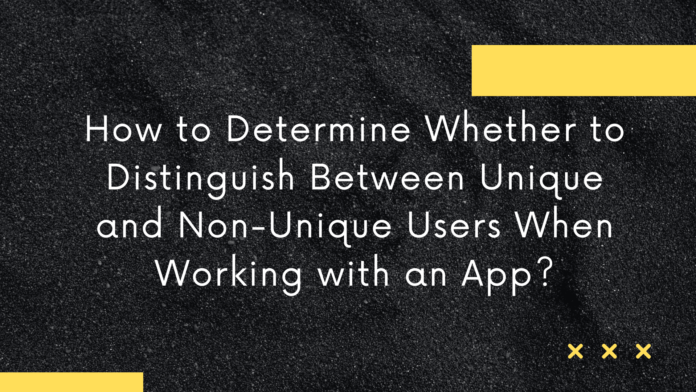Let’s dive into the world of app traffic and understand why it’s essential to distinguish between unique and non-unique users when working with applications. This knowledge is crucial for anyone running traffic from apps (web views), whether they are your own apps or ones you’ve acquired from us.
We often provide apps and request webmasters to set up two flows: one leading to a landing page (let’s call it “Wheel”) and the other to the main product. You might be wondering why, and this article will provide a comprehensive answer.
A bit of theory first:
A web view is essentially an application that acts as a browser and opens any link, in our case, the link of a flow (product/offer). In other words, when a user downloads the app, a browser opens inside it with the link we set (for example, the flow link), and the user experiences the mobile version of the casino through our app. This isn’t a typical browser; you can’t see the URL, and you can’t navigate anywhere.
So, if we take a link and insert it into the app, every time you open the app, guess what the user sees? That’s right, the “Wheel”! They spin it every time and get offered registration in the end. Maybe they could have hidden it, or perhaps the user didn’t understand it and closed your app.
I’ve personally seen a landing page with a wheel where, after spinning, a registration window appeared that couldn’t be closed. If you put such a landing page in your app, you can expect multi-accounts or zero conversion rates – either multi-accounts or abandonments.
Other scenarios also exist. Sometimes, even if you choose a registration form as the landing page, you might still encounter a registration form every time you go through the flow. This is more common when the registration process is step-by-step. However, to be fair, if you select the registration form, in 99% of cases, everything will work fine.
In summary:
If you plan to run traffic from apps, and your manager tells you, “This pre-landing converts the best,” so you don’t have to worry about quality, it’s worth separating unique and non-unique users.
All pre-landings that are not part of the product (like wheels, bonus landings, and others, as well as some registration forms) can be kept separate from the product. This means that every time you open them, even when already logged in, you might land on them, and this will certainly irritate users.
This isn’t because advertisers are evil and want to set you up; it’s because from many sources, be it teaser networks, context, targeted advertising, or push traffic, users click on the flow once, and after registering, they end up on the main page and save it. In the app, we make users go through the flow each time.
Therefore, before adding anything to your app and launching it, it’s essential to test how it will work for users. Users should be as comfortable as possible, landing on the main page every time they reopen the app. The more comfortable it is for them, the more likely they’ll come back, thus improving your quality.
Two ways to test this:
- The first and most reliable method is to set up the product in the app and go through the entire process. Then close it and reopen it.
- The second method is simpler: just open the flow in your browser, register, check the “Remember password” box, close the tab, and open the flow again.If you encounter a registration form or a bonus landing, it’s probably a good idea to separate unique and non-unique users.
P.S. Very often, people with their apps don’t test anything. If they understand that there will be a pre-landing in the mix, they automatically separate unique and non-unique users.
So, what does “separate unique and non-unique users” mean?
If during testing, you discover that the landing page activates every time, it’s necessary to guide unique users (users who clicked the link for the first time) to the pre-landing (let’s say, “Wheel”), and non-unique users to the main page. This can be easily done using any available tracker. And if you acquire the app from us, we’ll set this up from the start, which is why we sometimes ask for two flows.
In conclusion, the division between unique and non-unique users when working with apps is a key element for improving the user experience and enhancing traffic quality. It allows you to better engage new users through pre-landings and provides direct and convenient access to the main app for regular users. This approach not only boosts user loyalty but also enhances interaction with the product. It helps avoid unnecessary frustration due to repetitive intermediate steps. Testing different user interaction paths within the app and adapting flows for various user categories is a crucial step in optimizing the app monetization process.
Good luck with your traffic endeavors!
















